When a car is successful and becomes a classic, its legacy is always that it has changed the perception of the manufacturer or the brand, making it more popular and respected in the car world. The esoteric Toyota 2000 GT wasn’t very popular; in fact, it was sold in criminally low 351 copies. But it doesn’t matter since it succeeded not only in transforming Toyota’s image but also the image of the whole Japanese car industry. This makes it a precious piece of the car industry and probably the most essential Japanese car, as well as the most cherished and sought-after Toyota ever made.
To understand better why the 2000 GT was so essential, let’s go back to early ’60s Japan. The country was still healing its scars from World War II and changing rapidly into the industrial giant it is today. The car industry was one of the most promising, with numerous brands and a wealth of different models, concepts, and designs. Of course, most cars produced were economy models and so-called Kei cars, but Japanese brands felt they were ready to take on the world. However, there was just one problem. In those days, nobody recognized Japanese car companies as a force in the market. Their export figures were very small, even in similar markets in Asia, and none of them ever dared to try to export to Europe or America. In fact, Toyota did in 1959, but only a handful of cars were sold in the USA. What Toyota (and fellow Japanese car companies) needed was a thoroughbred sports car, something that would turn heads and instantly introduce the brand to global car buyers. Something fast, exclusive, drop-dead gorgeous, and well-made. The idea was sound, but the only problem was that something like that didn’t exist in early ’60s Japan.
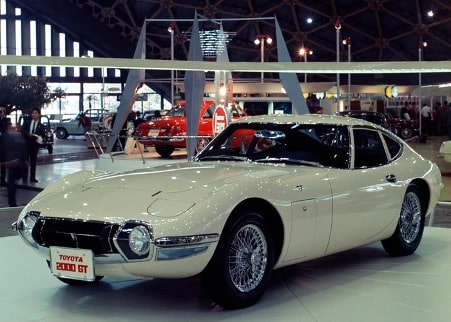
In order to get this project going, Toyota contracted Yamaha, which was renewed engine builder that could necessarily research and development for a new car. Interestingly, Yamaha already had a semi-developed car called A550X which should be a Nissan’s flagship coupe. Still, halfway through the process, Nissan backed out of the deal, leaving Yamaha with a barely-running concept car. Toyota agreed to finance the project but only if the car’s final design was theirs. In early 1965, the deal was made, and with Toyota’s funding and Yamaha’s technical expertise, the 2000 GT project was rapidly advancing.
With a clear goal in front of them, Toyota’s and Yamaha’s engineers decided to put the latest technology and construction ideas into the 2000 GT, borrowing from premium European brands. The car had a strong, central, steel backbone chassis which looked very similar to the Lotus’ solution, double wishbone suspension like the Ferrari race cars, a high-revving six-cylinder engine like the Jaguar E-Type, and disc brakes on all four corners like the Alfa Romeo. Compiling all of that together in one car made the 2000 GT one of the most advanced vehicles of the period.
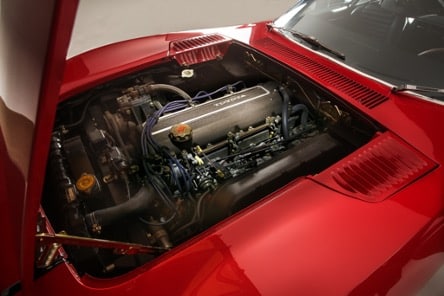
The engine and design are two of the most impressive features that deserve a closer look. The 2.0-liter, six-cylinder engine was based on the standard unit found in the upscale Toyota Crown sedan. However, Yamaha designed a new, high-revving cylinder head, intake system, and three 2-barrel carburetors, transforming it into a proper sports car engine. With 150 hp coming from 2.0-liters, it wasn’t massively powerful, but with a curb weight of under 2500 pounds, the performance was brisk, and handling was sublime thanks to the standard LSD differential. The 0 to 60 mph took just over 8 seconds, and the top speed was 137 mph, raising eyebrows of the motoring press.
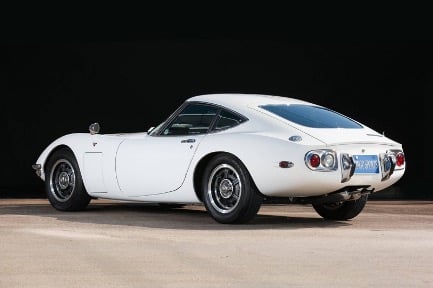
The final piece of the puzzle was the design. The long hood-short deck silhouette was penned by Satoru Nozaki, Toyota’s designer, who was also influenced by numerous European sports cars. However, the iconic shape he created can be considered all-original and definitely recognizable. The most impressive feature was the revolving headlights which were never seen before. The interior of the car was also very advanced, although quite compact. So compact that Sean Connery could not fit, so Toyota hastily produced two convertible models so the car could be featured in the James Bond movie “You Only Live Twice.” However, no convertible Toyota 2000 GT was ever offered to the general public, and all cars sold were coupes.

The official presentation took place at Toyota Motor Show in 1965 and immediately stunned the car public, not just in Japan but all over the world. It was a car that nobody expected, and nobody thought that Japanese car brands were capable of making it. The news of exotic-looking and technologically advanced coupe from Toyota spread all over the globe, and the official sales started in 1967, not just in Japan but also in America and Europe, through the newly formed Toyota dealer network. However, despite the looks and the technology, there was a problem. The 1967 Toyota 2000 GT had an MSRP price of $7,150, much more than the Chevrolet Corvette, Jaguar E-Type, or Porsche 911 and closer to the price of the Ferrari Dino or Maserati Ghibli. Very soon, Toyota realized that the car was just too expensive, but since it was practically hand-built, there was no other option. The wealthy buyers in America or Europe who could afford the car didn’t know much about the company to decide to buy it, and it was way too expensive for domestic buyers in Japan.
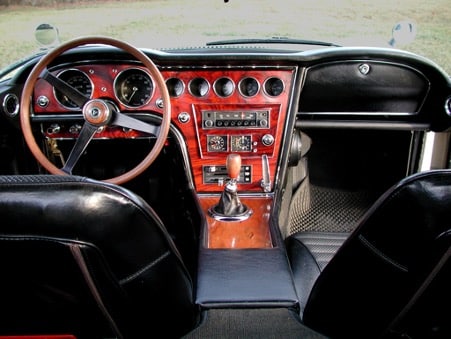
The automotive publications took notice of the brand-new sports car from Japan and praised its equipment, balance, driving feel and fit and finish. In 1967 and 1968, Toyota even sponsored a racing team led by legendary Carroll Shelby in the American Trans-Am championship. The Toyota 2000 GT was very competitive and even finished second in the 1968 season, but it didn’t help increase sales. In 1969, the 2.3-liter engine entered production, delivering 140 hp (10 hp less than the 2.0-liter unit) with more torque. Faced with minimal sales but praises from colleagues in the industry, Toyota had no other choice but to kill this model in 1970, after only 351 cars were sold.
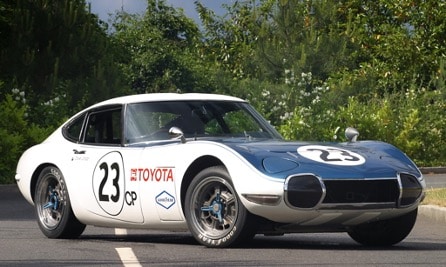
Despite its disappointing sales records, Toyota 2000 GT did what the company board hoped it would. It turned the eyes of the whole world into a modest Japanese company with big ambitions and determination. It showed that quality sports cars aren’t just made in Europe and America and introduced the world to a new global automotive superpower. In a sense, Toyota 2000 GT was the vision of Toyota’s future and a sign that this company would be the world’s largest car manufacturer a few decades later.





